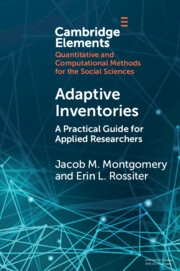Element contents
Adaptive Inventories
Published online by Cambridge University Press: 08 July 2022
Summary
- Type
- Element
- Information
- Online ISBN: 9781108862516Publisher: Cambridge University PressPrint publication: 28 July 2022
References
- 5
- Cited by

